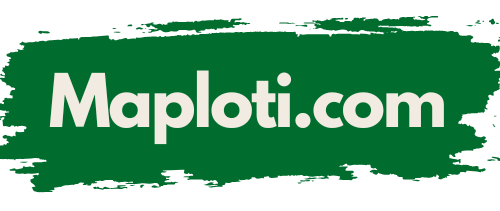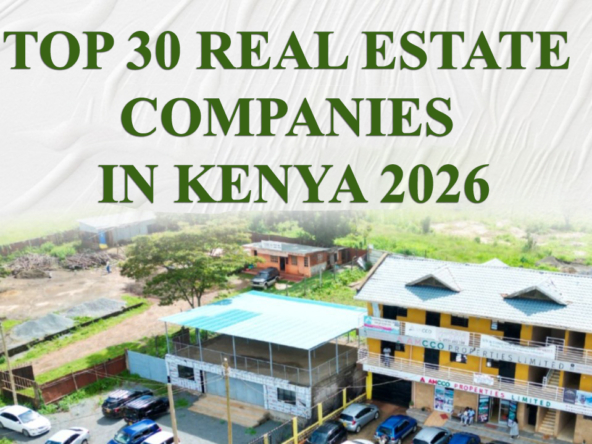Despite concerted efforts by financial institutions to expand their home loan products, Uganda’s mortgage market remains significantly underdeveloped, with a remarkably low penetration rate of approximately 2% of the total population. This stark reality means that the vast majority of Ugandans, even those with stable aspirations for homeownership, remain excluded from formal financing channels. The primary culprits behind this constraint are deeply rooted in the prevalence of informal incomes across the workforce and persistently high interest rates, which collectively limit access to formal financing and compel a large segment of the population to remain in the rental market. Addressing these systemic issues is crucial for truly unlocking the immense potential of Uganda’s mortgage market.
Understanding the Constraints: Key Market Dynamics at Play
The limited reach of Uganda’s mortgage market is a complex issue, shaped by several powerful underlying market dynamics that directly impact affordability and eligibility.
Informal Sector Dominance: A Documentation Dilemma
A monumental challenge for Uganda’s mortgage market stems from the sheer dominance of the informal sector. Over 70% of Uganda’s workforce operates within this economy, characterized by highly variable incomes and, critically, a pervasive lack of formal payroll documentation. This informal structure profoundly complicates traditional credit assessments, which typically rely on consistent, verifiable income streams and formal employment records. Without standardized pay slips or tax records, banks face significant hurdles in accurately gauging a borrower’s repayment capacity and financial stability. This documentation dilemma effectively excludes a vast segment of the working population, even those with substantial earnings, from accessing formal mortgage products, perpetuating the low penetration rate in Uganda’s mortgage market.
Punitive Interest Rate Environment: A Barrier to Affordability
The prevailing interest rate environment in Uganda presents another formidable barrier to mortgage uptake. Commercial mortgage rates typically hover between a steep 16% and 20%. These rates are substantially higher than those found in many peer economies across East Africa, placing a heavy financial burden on potential homeowners. High interest rates significantly inflate monthly repayments, rendering mortgage finance unaffordable for a large portion of the population even if they meet other eligibility criteria. This high cost of borrowing directly deters uptake, pushing aspiring homeowners away from formal loans and perpetuating the reliance on informal, often slower, methods of incremental housing construction, thereby stifling the growth of Uganda’s mortgage market.
Product Innovation Attempts: Limited Impact Despite Efforts
While the challenges are clear, financial institutions have made earnest attempts at product innovation within Uganda’s mortgage market. In 2023, prominent lenders like Housing Finance Bank and Centenary Bank introduced tiered mortgage products, aiming to broaden accessibility. These innovations included features such as lower down payments, some as modest as 15%, and more flexible tenors extending up to 25 years. Despite these laudable efforts, the impact on overall mortgage uptake has been limited. The underlying issue of income verification, particularly for informal earners, continues to be a persistent hurdle. Without a fundamental shift in how income is assessed for the majority of the workforce, even innovative products struggle to achieve widespread adoption and truly expand Uganda’s mortgage market.
Gauging Demand & Awareness: Search and Media Signals
Despite the systemic constraints, there are clear signals from public interest and media coverage that underscore a significant underlying demand for homeownership and solutions within Uganda’s mortgage market.
Google Trends: Public Interest Surges
The digital footprint provides compelling evidence of public interest in home financing. Google Trends data shows that searches for “mortgage Uganda” peaked at a robust 68/100 in June 2024. This surge in interest directly corresponded with the finance minister’s budget address, which included proposals to cap ceiling interest rates. Such peaks indicate a strong public yearning for affordable housing finance and a responsiveness to potential policy changes. This sustained search interest signals a vibrant, albeit unserved, potential customer base for Uganda’s mortgage market, highlighting the need for solutions that match this evident demand.
Broadcast Coverage: Highlighting Micro-Mortgage Pilots
Traditional media outlets have also played a crucial role in raising awareness and showcasing potential solutions. RadioOne’s popular “Homeownership Today” series and various segments on NTV Uganda have actively featured case studies of pilot micro-mortgage schemes. These programs specifically targeted demographic groups with relatively stable, though not always formally documented, incomes, such as teachers and healthcare workers. By spotlighting successful instances of smaller-scale, tailored financing, these broadcasts not only educate the public but also demonstrate the viability of alternative models within Uganda’s mortgage market, inspiring both potential borrowers and financial innovators.
Deeper Dive into Hurdles: Eligibility, Scoring, and Regulation
Beyond the broader market dynamics, specific systemic issues continue to constrain the growth and accessibility of Uganda’s mortgage market.
Eligibility Constraints: The Formal Employment Trap
The stringent eligibility requirements of traditional mortgage providers continue to be a major bottleneck. The prevalent reliance on formal employment and documented payrolls effectively excludes the vast majority of informal workers, who form the bedrock of Uganda’s economy. Furthermore, even for those with formal incomes, the high valuations of properties in desirable areas necessitate exceptionally large down payments, typically ranging from 20% to 30%. These substantial upfront costs create a significant barrier to entry, even for middle-income earners, thereby limiting the pool of eligible borrowers within Uganda’s mortgage market.
Credit Scoring Limitations: The Invisible Borrower
A fundamental challenge for Uganda’s mortgage market lies in the limitations of traditional credit bureaus. These bureaus currently capture credit history for only approximately 25% of the adult population. This leaves a vast majority of potential borrowers without a documented credit history, making it incredibly difficult for lenders to assess their creditworthiness using conventional methods. Without comprehensive credit scoring, banks are forced to rely on more conservative underwriting practices, further restricting access to finance for otherwise creditworthy individuals who simply lack a formal financial footprint. Expanding credit bureau coverage is critical for unlocking this hidden potential in Uganda’s mortgage market.
Regulatory Gaps: Hindering Creative Underwriting
The existing regulatory frameworks in Uganda’s mortgage market also present certain gaps that limit innovative underwriting approaches. Specifically, the lack of well-developed collateral frameworks for movable assets, such as agricultural equipment, business machinery, or even intellectual property, restricts lenders’ ability to accept diverse forms of security. This heavy reliance on traditional fixed collateral (like land titles) narrows the scope for creative financing solutions that could cater to the varied asset bases of informal workers and small business owners. Addressing these regulatory gaps could unlock new avenues for collateralization, fostering more inclusive lending practices within Uganda’s mortgage market.
Pioneering the Future: Innovative Solutions Taking Root
Despite the hurdles, several promising innovative solutions are emerging, offering pathways to greater inclusivity and efficiency in Uganda’s mortgage market.
Alternative Data Scoring: Unlocking the Informal Sector
Fintech startups are at the forefront of unlocking financing for the informal sector. Companies like LendWise are piloting alternative data scoring models, leveraging non-traditional data points such as mobile money transaction history. By analyzing the consistency and volume of mobile money usage, bill payments, and other digital footprints, these platforms can build robust credit profiles for informal earners who lack formal bank statements or payrolls. This innovative approach promises to qualify a previously unserved demographic, significantly expanding the addressable market for Uganda’s mortgage market by making credit assessments more inclusive and reflective of real-world financial behavior.
Rent-to-Own Programs: Gradual Homeownership Pathways
Real estate firms are increasingly partnering with microfinance institutions to structure innovative rent-to-own programs. These models offer a gradual pathway to homeownership, where renters convert a portion of their monthly rent into equity or a down payment over an agreed period. This incremental equity acquisition model removes the immediate burden of a large upfront down payment, making homeownership accessible to individuals who might otherwise be perpetual renters. Such programs foster financial discipline and allow aspiring homeowners to build credit and savings over time, representing a powerful solution for expanding access to property ownership in Uganda’s mortgage market.
Government Guarantee Schemes: De-risking Lending
In a crucial move to stimulate lending, the Ministry of Finance proposed a partial credit guarantee fund for mortgages in the 2024/25 budget. The objective of this fund is to de-risk lending to targeted groups, particularly those traditionally considered high-risk due to informal incomes or limited collateral. By absorbing a portion of the default risk, the government incentivizes commercial banks to extend mortgages to a wider range of borrowers. This governmental support is a vital mechanism for bridging the gap between conservative lending practices and the vast unserved demand, marking a significant step towards a more inclusive Uganda’s mortgage market.
Investor Implications: Opportunities and Strategic Engagement
For investors looking at Uganda’s mortgage market, the current landscape presents both significant challenges and enormous untapped potential.
High Unserved Demand: A Lucrative Frontier
The most compelling investor implication is the sheer scale of unserved demand within Uganda’s mortgage market. With a potential addressable market estimated to exceed 500,000 households, there is an immense opportunity for innovative financial products and services. Mortgage innovation, particularly in areas addressing informal incomes and affordability, has the potential to unlock significant value and generate substantial returns for early movers who can effectively penetrate this underserved segment. This represents a lucrative frontier for financial institutions and investors willing to embrace new models.
Partnership Opportunities: Bridging the Gaps
The complexities of Uganda’s mortgage market necessitate collaborative approaches. Partnerships between traditional banks, agile fintech companies, and property developers can create powerful, integrated offerings. Banks bring capital and regulatory compliance, fintechs offer innovative credit assessment tools and digital platforms, and property developers provide the housing stock. Such collaborations are crucial for bridging existing documentation gaps, streamlining application processes, and reaching segments of the population previously excluded, ultimately expanding the reach and efficiency of the entire Uganda’s mortgage market ecosystem.
Regulatory Advocacy: Shaping the Future
Active engagement with policymakers is a vital strategic implication for investors seeking to foster a more enabling environment for Uganda’s mortgage market. Advocating for the refinement and rapid implementation of government credit guarantee schemes, and pushing for regulatory changes that enable movable asset collateralization, can significantly broaden market access. By participating in policy dialogue, investors can help shape a regulatory landscape that is more conducive to inclusive lending and supports the growth of a robust and accessible housing finance sector.
Conclusion: A Pivotal Moment for Homeownership in Uganda
Uganda’s mortgage market stands at a critical crossroads. While undeniable demand for homeownership is clear, it is currently constrained by systemic barriers such as the dominance of informal incomes, persistently high interest rates, and limitations in traditional credit scoring. However, the emergence of innovative solutions, including alternative data scoring, flexible rent-to-own programs, and crucial government guarantee schemes, offers a beacon of hope. The sustained progress on the proposed credit guarantee fund and the broader integration of fintech solutions by 2026 will be absolutely critical. These advancements hold the key to transforming Uganda’s housing finance ecosystem, ultimately enabling millions more Ugandans to realize the dream of homeownership and fostering more inclusive economic growth.




